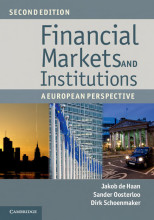Scherer, Matthew U, (2016), Regulating Artificial Intelligence Systems: Risks, Challenges, Competencies, and Strategies, 29 Harv. J. L. & Tech. 353–400
11 important questions on Scherer, Matthew U, (2016), Regulating Artificial Intelligence Systems: Risks, Challenges, Competencies, and Strategies, 29 Harv. J. L. & Tech. 353–400
Evaluate the strengths and weaknesses of using the tort system, as opposed to direct regulation, for managing public risks associated with emerging technologies such as AI. Provide examples from the text to support your arguments.
- Strengths: Effective in adjudicating specific past harms, encourages internalization of costs,
utilizes fact-finding strengths of courts.
- Weaknesses: Reactive nature, may lead to regressive risk choices, limited in addressing broader
risk profiles of emerging technologies.
Discuss the role of AIDA (Artificial Intelligence Development Act) in proposing a regulatory regime for AI. Analyze how AIDA leverages the strengths of legislatures, agencies, and courts to ensure the safety of AI systems.
Examine the challenges associated with defining artificial intelligence for regulatory purposes. How does AIDA address these challenges, and what role does the Agency play in formulating and updating the definition of AI?
- Higher grades + faster learning
- Never study anything twice
- 100% sure, 100% understanding
Compare and contrast the proposed tort liability system for certified and uncertified AI under AIDA. Discuss the incentives provided to AI developers and the potential impact on the market for AI systems.
20. Assess the role of courts in the AIDA framework, particularly in adjudicating individual tort claims arising from AI-induced harm. How does the liability framework influence court decisions, and what challenges might arise in determining responsibility for AI-related harms?
- Certified AI: Limited tort liability, requires establishing negligence for tort claims.
- Uncertified AI: Strict joint and several liability, encourages thorough examination of safety
features.
- AIDA balances internalizing externalities without stifling innovation.
Explore the ethical implications of regulating AI, considering issues such as bias, transparency, and accountability. Discuss how AIDA or alternative regulatory approaches address these ethical concerns.
Compare and contrast AI regulatory frameworks across different countries or regions. Assess the strengths and weaknesses of these approaches, considering cultural, legal, and technological factors.
Analyze how AIDA's proposed regulatory regime might impact the pace and direction of AI innovation. Consider the balance between fostering innovation and ensuring public safety.
Delve into the concept of legal personhood for AI systems. Discuss the implications, challenges, and potential benefits of treating AI entities as legal persons. Consider how this might align with or differ from AIDA.
Examine the potential role of insurance in regulating AI systems. Discuss whether requiring manufacturers and operators to purchase AI-specific insurance could be an effective mechanism for managing risks.
Evaluate the idea of "AI sunshine laws" requiring public disclosure of AI code and specifications. Discuss the benefits and challenges of transparency in AI development and operation, considering potential impacts on innovation.
Speculate on the future of AI regulation, considering the evolution of technology and public perceptions. Discuss whether AIDA or alternative approaches are adaptable to unforeseen challenges in AI development.
The question on the page originate from the summary of the following study material:
- A unique study and practice tool
- Never study anything twice again
- Get the grades you hope for
- 100% sure, 100% understanding































